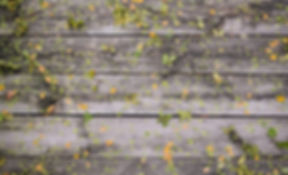SLS 3D Printing; Leonardo Da Vinci – “Details make perfection, and perfection is not a detail”.

"SLS technology is the next step in 3d printing: it makes possible to print objects that are difficult or impossible to be printed in FDM (Fused Deposition Modeling) technique – the most popular technology in the 3d printing market".
(SLS)Selective laser sintering is an additive manufacturing technology that uses a laser to sinter powdered plastic material into a solid structure based on a 3D model. SLS has been a popular choice for engineers in product development for decades. Low cost per part, high productivity, and established materials make the technology ideal for a range of applications from functional prototyping to small batch or bridge manufacturing.

Nylon: A Material for Prototyping and Production
The most common material for selective laser sintering is nylon, a popular engineering thermoplastic beloved for its lightweight, strong, and flexible properties. Nylon is stable against impact, chemicals, heat, UV light, water, and dirt.
Nylon is ideal for a range of functional applications, from engineering consumer products to healthcare.
Nylon is a synthetic thermoplastic polymer that belongs to the family of polyamides. Its two versions commonly used for selective laser sintering are Nylon 11 and 12, or PA11 and PA12.
PA is the abbreviation of polyamide, and the numbers represent the number of carbon atoms in the material. Both are similar in material properties, PA11 is slightly more flexible and impact resistant, whereas PA12 is stronger, more abrasion resistant, and biocompatible.
Nylon 11 and 12 are both single component powders, but SLS 3D printers can also use two-component powders, such as coated powders or powder mixtures. Nylon composites with aluminide, carbon, or glass are developed to optimize parts for higher strength, stiffness, or flexibility. With these two-component powders, only the component with the lower glass transition point is sintered, binding both components.
Design Freedom
Most additive manufacturing processes, such as stereolithography (SLA) and fused deposition modeling (FDM), require specialized support structures to fabricate designs with overhanging features.
Selective laser sintering does not require support structures because unsintered powder surrounds the parts during printing. SLS can produce previously impossible geometries, such as interlocking or moving parts, parts with interior components or channels, and other highly complex designs.
Engineers generally design parts with the capabilities of the final manufacturing process in mind, also known as design for manufacturing. When additive manufacturing is used for prototyping alone, it is limited to parts and designs that conventional manufacturing tools can ultimately reproduce during production.
As selective laser sintering becomes a viable manufacturing method for an increasing number of end-use applications, it has the potential to unleash new possibilities for design and engineering. SLS can print complex designs in a single print that would normally require multiple parts. This helps alleviate weak joints and cuts down on assembly time.
Selective laser sintering can take generative design to its full potential by enabling lightweight designs that employ complex lattice structures impossible to manufacture with traditional methods.
High Productivity
SLS is the fastest additive manufacturing technology for functional, durable prototypes and end-use parts. The lasers that fuse the powder have a much faster scanning speed, and are more accurate than the layer deposition methods used in other processes like industrial FDM.
Multiple parts can be tightly arranged during printing to maximize the available build space in each machine. Operators use software to optimize each build for the highest productivity leaving only minimal clearance between parts.
SLS allows operators to pack the build chamber with as many parts it can fit and print them without supports to save time in post-processing.
Parts can be added to the build while printing is already in progress. This provides the opportunity for last minute design changes or to add consecutive iterations of a prototype.
Long-Lasting Materials
The key to SLS 3D printing’s functionality and versatility is the material. Nylon and its composites are proven, high-quality thermoplastics. Laser-sintered nylon parts have close to 100 percent density with mechanical properties comparable to those created with conventional manufacturing methods like injection molding.
SLS nylon is a great substitute for common injection molding plastics. It offers superior living hinges, snap fits, and other mechanical joints compared to any other additive manufacturing technology.
Reduced Product Development Cycles
Selective laser sintering enables engineers to prototype parts early in the design cycle, then use the same machine and material to produce end-use parts. SLS does not require the same expensive and time-consuming tooling as traditional manufacturing, so prototypes of parts and assemblies can be tested and easily modified over the course of a few days. This drastically reduces product development time.
SLS is an economical way to produce complex, custom parts, or a series of small components for end products. In many cases, SLS is a cost-effective alternative to injection molding for limited-run or bridge manufacturing.





















